
The unemployment rate rose to 4.3%, triggering a past recession indicator
It’s been a busy week for the economy and, in turn, markets.
Perhaps the biggest news is that the unemployment rate rose to 4.3% today (chart below), triggering a recession indicator – the “Sahm Rule” (chart below).
The Sahm Rule (basically) says that whenever unemployment has increased more than half a percent in a year, the US economy has hit recession (grey shaded areas). The inference is that as the unemployment rate increases, more people worry about losing their job, so they pull back on spending. That hurts businesses’ bottom lines, so they lay people off, and the cycle continues. As the chart shows, often, the unemployment rate then rises quickly.
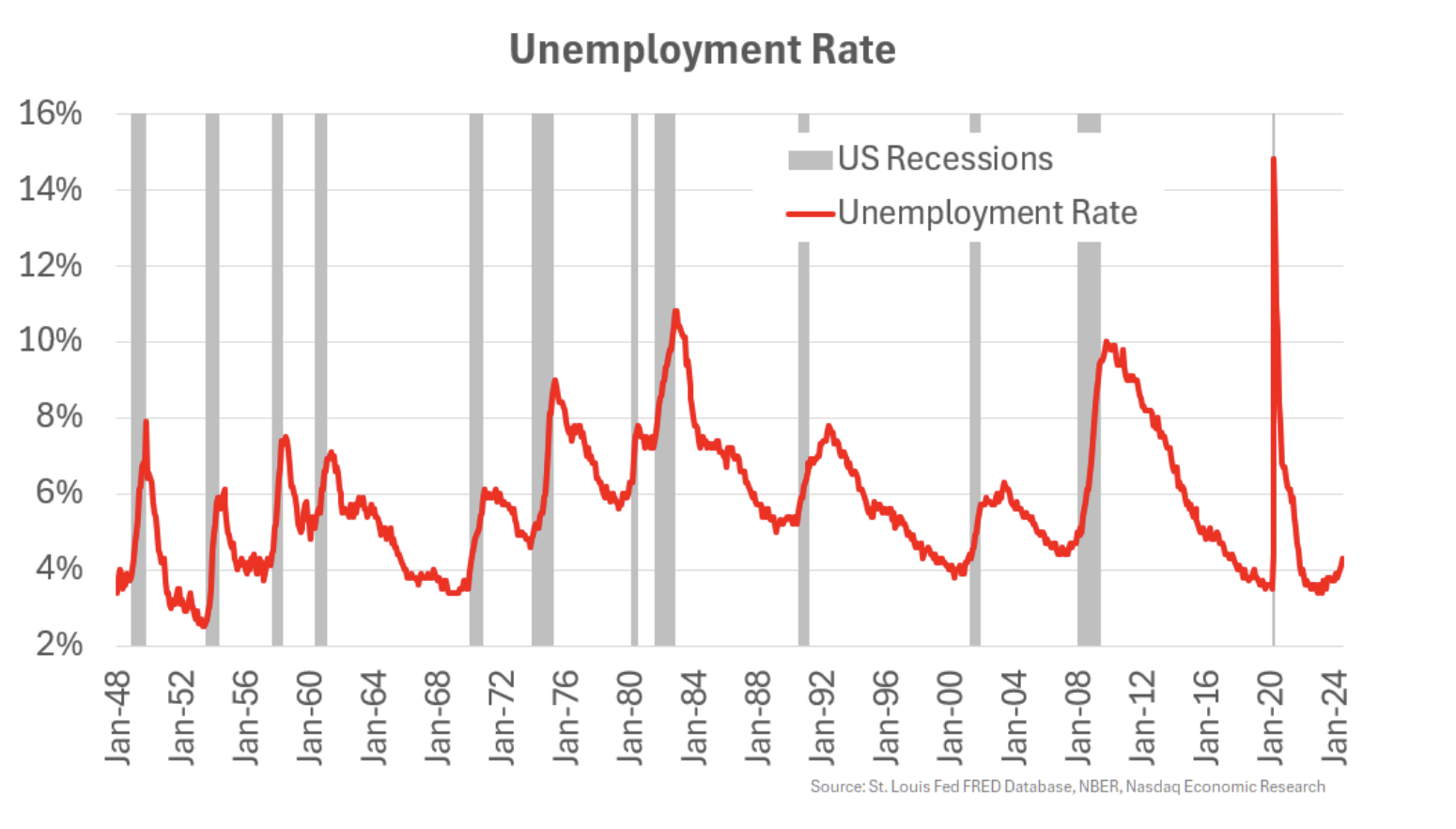
The Fed left rates at 5.5%
The other big thing that happened this week was the Fed decided to leave rates unchanged. That’s despite most other countries (including the UK this week) now having already started cutting rates.
The fed funds rate has been 5.5% for a year now – the most restrictive it’s been since before the Credit Crisis. That’s despite the fact that the economy has largely normalized, unemployment is rising and inflation has fallen to very close to the Fed’s 2% target.
Markets are in a panic…but there are 3 reasons we shouldn’t panic yet
So Fridays new unemployment data left markets thinking the Fed has made a(nother) mistake. Waiting too long to cut rates risks causing a recession. That’s why we’ve seen 10-year Treasury yields drop 50bps this week to 3.9%.
There are three reasons not to panic… yet.
1. The unemployment is rising because of people joining the labor force, not getting laid off
First and foremost, the reason why the unemployment rate is rising matters.
The unemployment people can rise for two reasons:
- We see net job losses (driven by layoffs)
- More new workers are joining the labor force than there are jobs being created
We are decidedly in camp B right now.
As the chart below shows, the increase in unemployment from 3.4% in January 2023 to 4.3% now (red line) aligns with a labor force increase of 2.5 million people: +1.1 million newly employed people (green bars) and +1.4 million (unemployed) people still looking for jobs (blue bars).
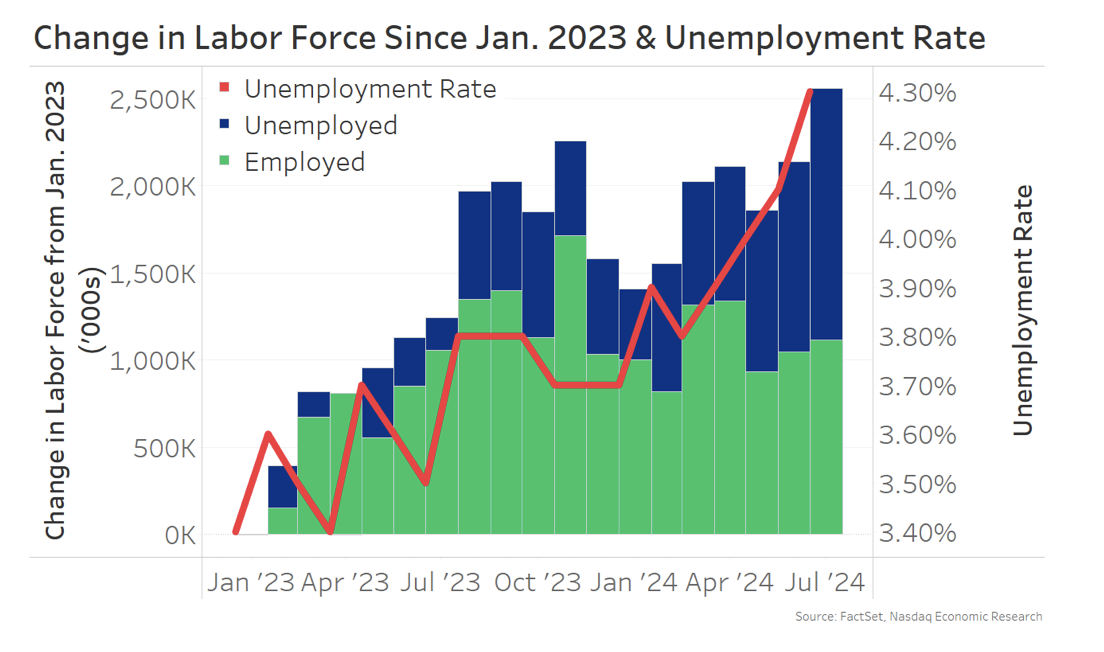
Other data suggests this represents the job market being more “in balance” – with supply of jobs better matching demand – after a squeeze on labor that persisted after Covid.
Importantly, the layoff rate tied its record low of 0.9% in June (chart below).
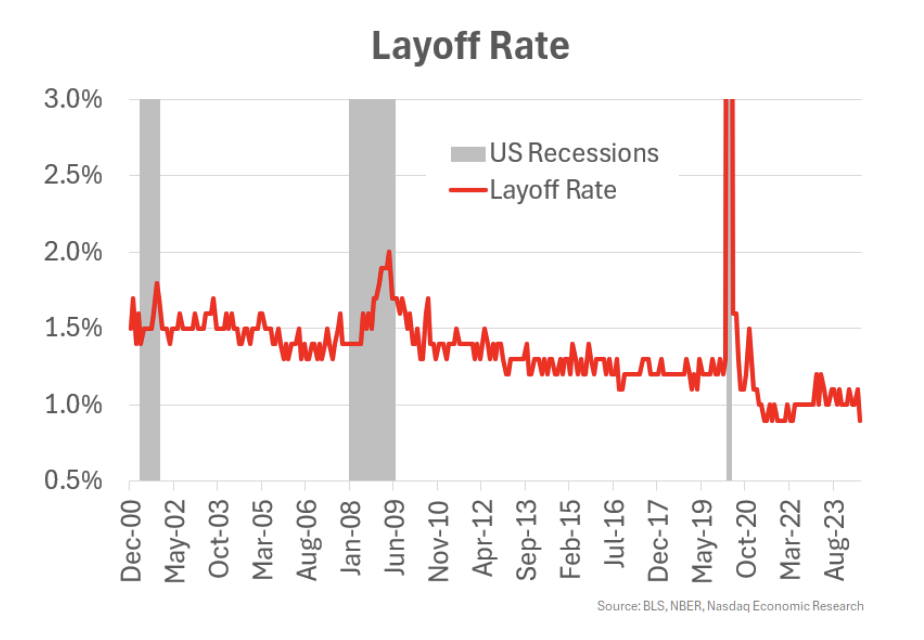
2. Real incomes and spending are still rising
As we discussed last week, Q2 GDP grew +2.8% in large part thanks to continued consumer spending.
Looking at the monthly data, real consumer spending growth has actually been trending up this year (chart below, orange line). That’s been enabled by rising real income growth (green area).
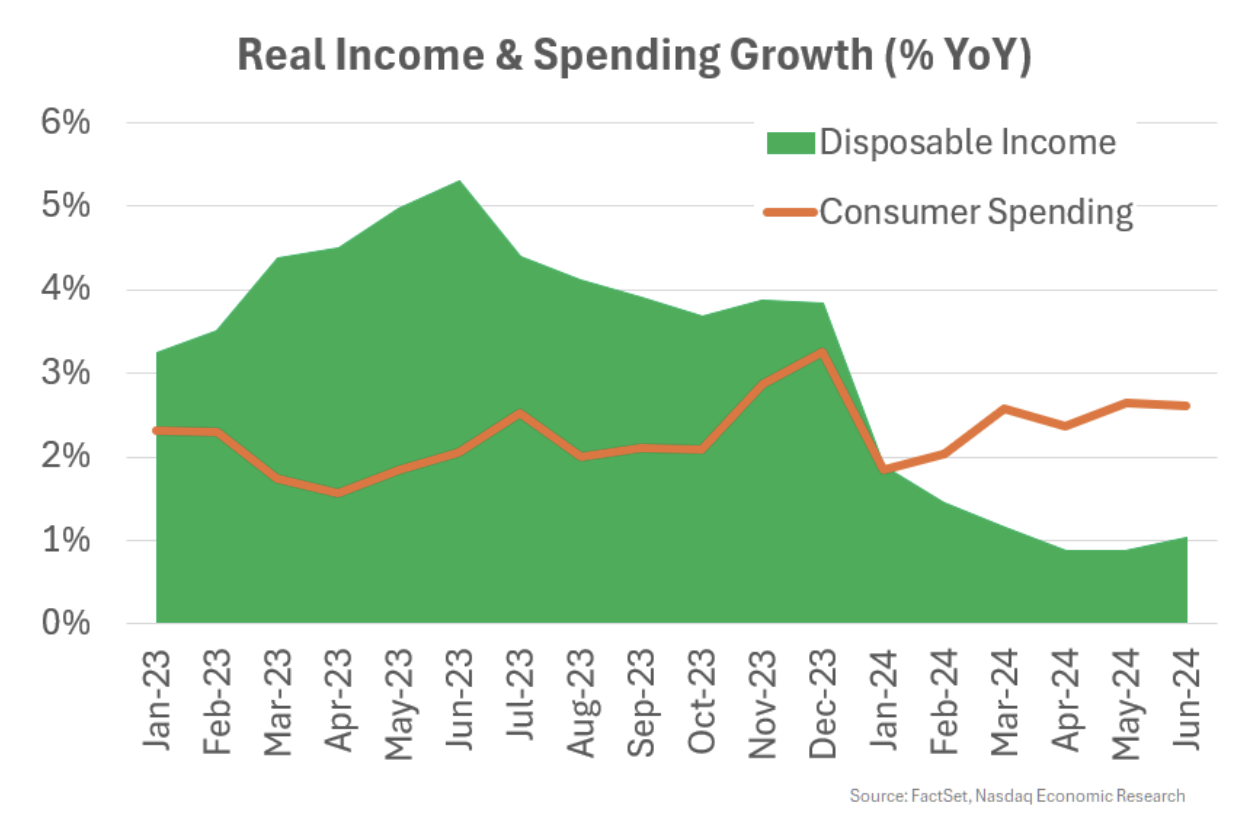
One potential sign of trouble is that spending is now rising faster than income. That’s not sustainable – credit card balances are already increasing, and earnings suggest consumers are becoming more budget conscious. Although people have been saying that for years now.
3. The manufacturing sector has actually strengthened this year
Another metric of economic output – industrial production – shows that the beleaguered manufacturing sector has looked better this year. Industrial production is actually up +2.4% since January (chart below). That’s despite, as a capital-intensive sector, being one of the most rate-sensitive sectors of the economy.
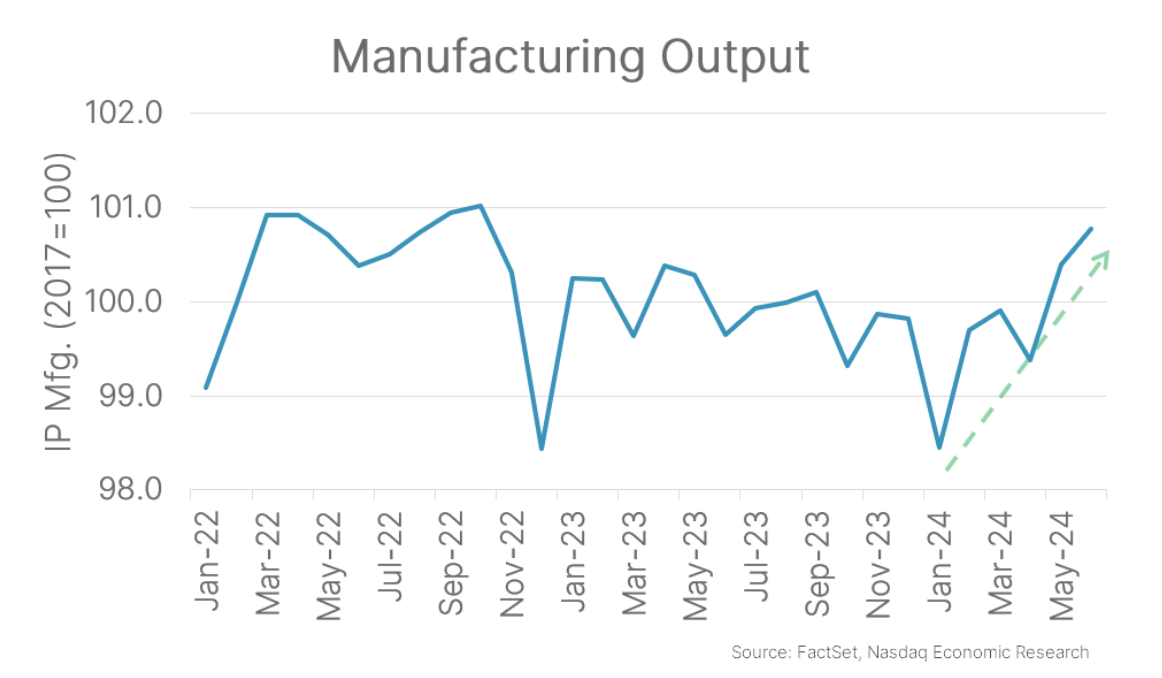
Interestingly, manufacturers maintained output and employment despite how consistently the PMI surveys said they were expecting to contract.
Even with the economy holding up, Fed opting to do nothing this week looks like a mistake
So, despite the uptick in the unemployment rate, the labor market and the broader economy are still holding up.
That’s not to say that can’t change. But the Fed might have had a better chance of ensuring a soft landing if it had started cutting rates already... Even their own estimates suggest rates should be closer to 4.5% (not the 5.5% they are still at).
That’s what a lot of market experts are saying too. Some are even calling for 0.5% cuts in September and November. Although that would make financing housing and company debt cheaper – it might be at the expense of a slightly rougher landing.
The information contained above is provided for informational and educational purposes only, and nothing contained herein should be construed as investment advice, either on behalf of a particular security or an overall investment strategy. Neither Nasdaq, Inc. nor any of its affiliates makes any recommendation to buy or sell any security or any representation about the financial condition of any company. Statements regarding Nasdaq-listed companies or Nasdaq proprietary indexes are not guarantees of future performance. Actual results may differ materially from those expressed or implied. Past performance is not indicative of future results. Investors should undertake their own due diligence and carefully evaluate companies before investing. ADVICE FROM A SECURITIES PROFESSIONAL IS STRONGLY ADVISED. © 2024. Nasdaq, Inc. All Rights Reserved.
